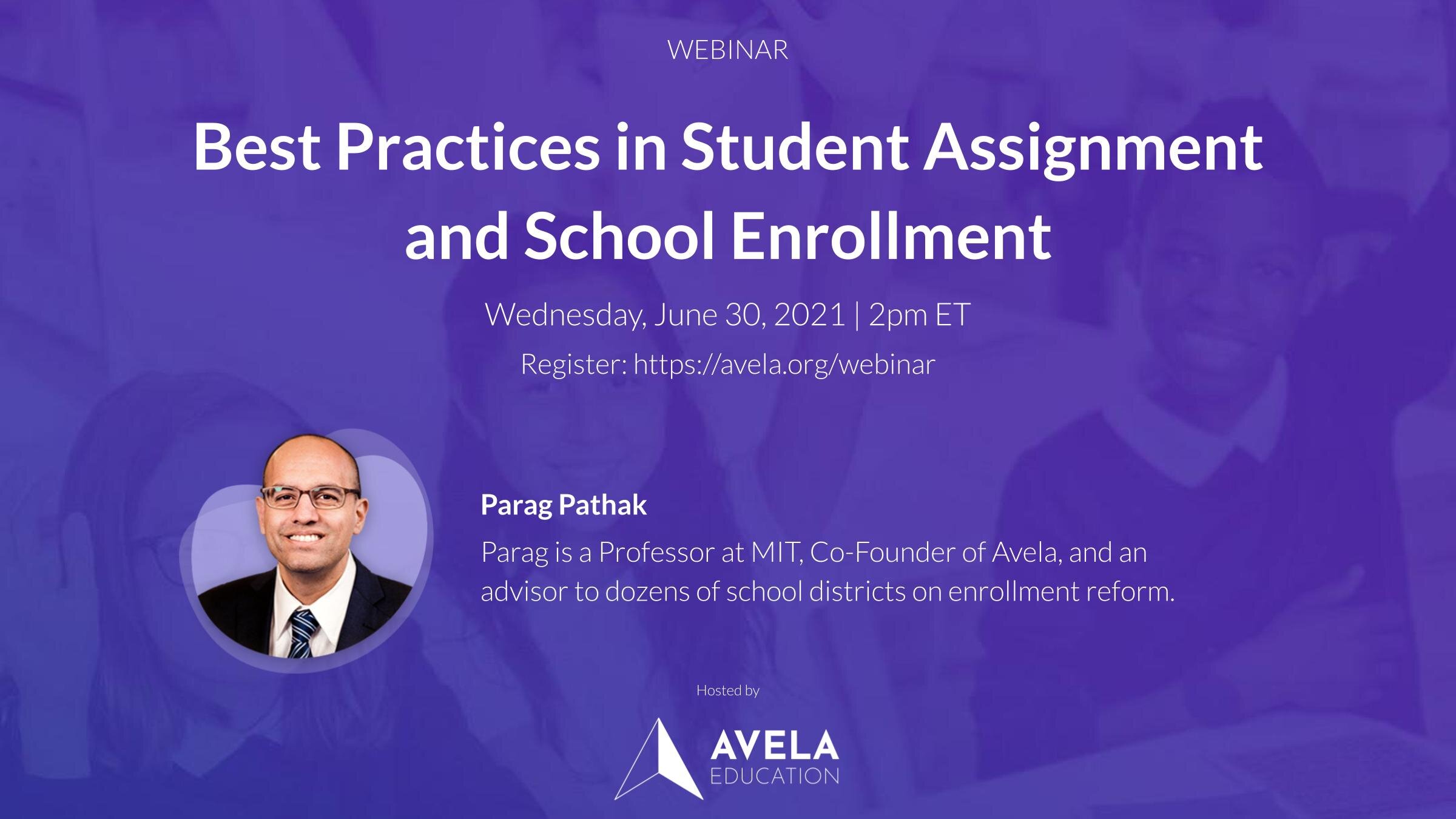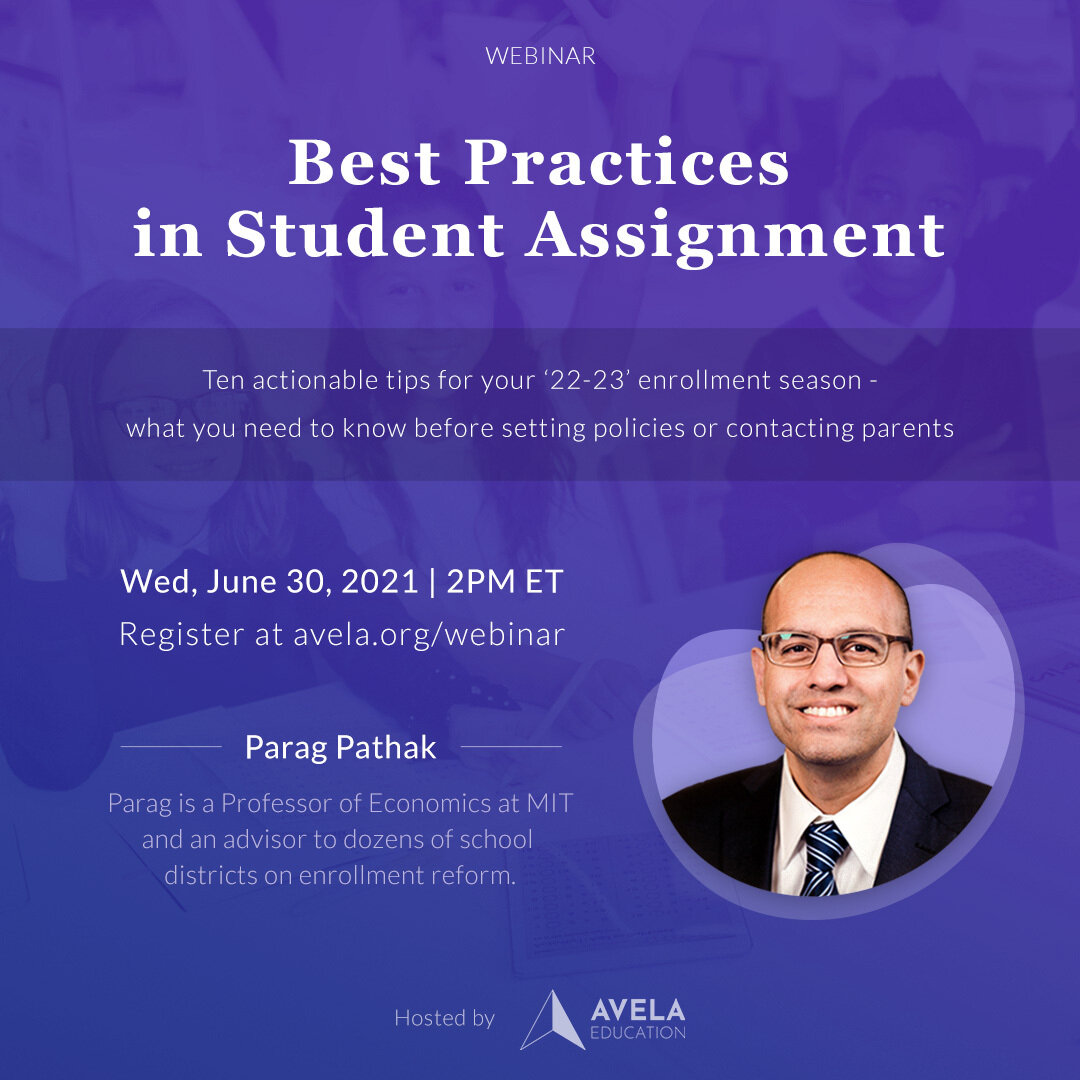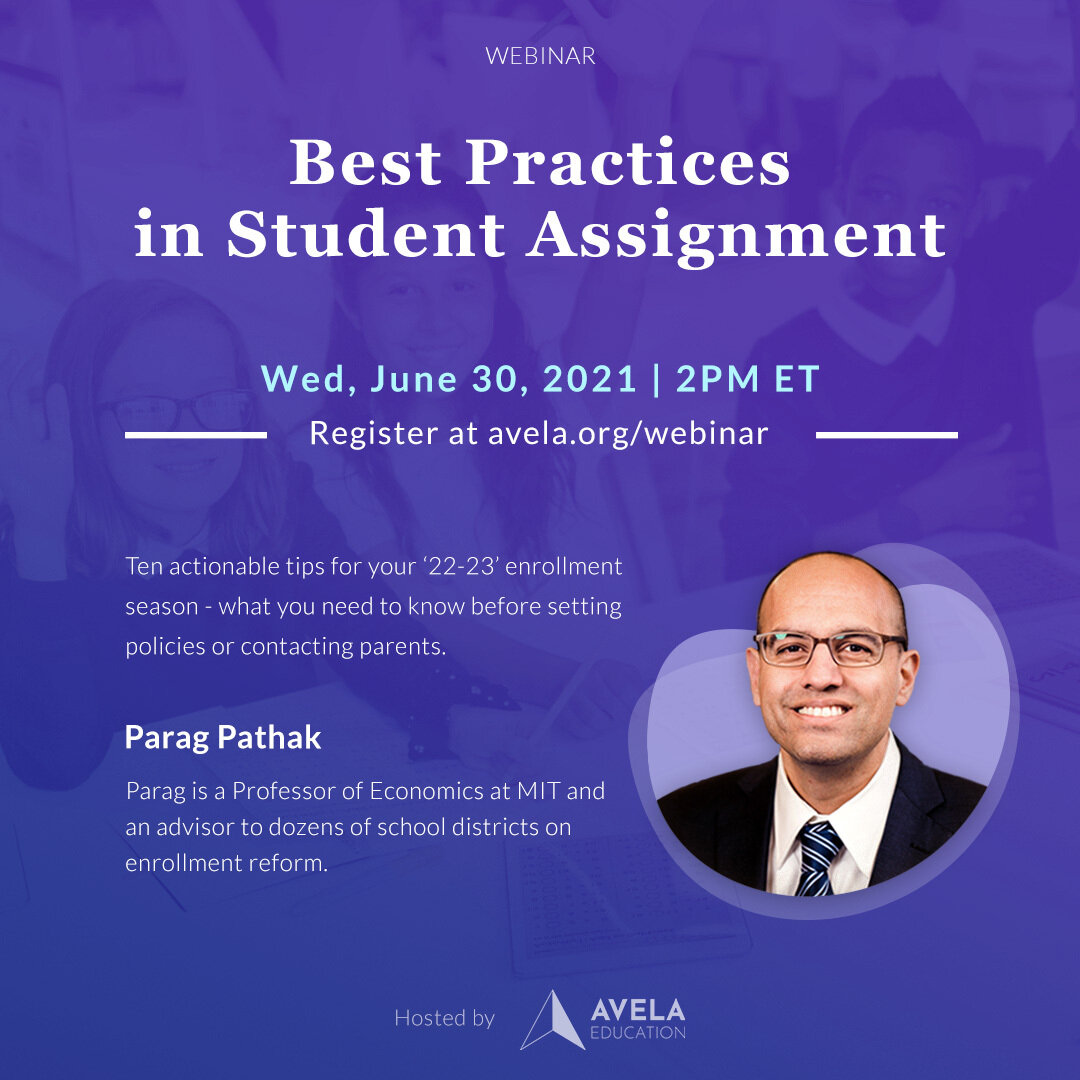Best Practices in Student Assignment
Wednesday, June 30, 2021 - 11:00am PT / 2:00pm ET
Watch the webinar to learn ten actionable tips for your 2022-2023 enrollment cycle - what you need to know before setting policies or contacting parents. Avela Co-Founder and MIT Professor Parag Pathak has advised dozens of major US school districts on student assignment processes and will his tips and tricks.
Watch the recording below. Transcript, slides, and analysis will be available soon.
Recording
Webinar Slides
Summary
Recommendation 1 — Treat enrollment as a matching market.
Enrollment is an allocation problem with scarcity, but where money cannot be used. Popular seats are scarce goods (supply) and families have heterogenous preferences for schools (demand).
Matching markets are situations where prices can’t be used to decide who gets what. Al Roth’s book, Who Gets What - and Why, offers a great overview of the economics of matching markets. They are used in a variety of situations
Kidney donation and exchange
Medical residency assignments
Army cadet branching
School enrollment lotteries
Recommendation 2 — Set realistic goals and manage expectations, but short-run and long-term
Warning - Student assignment is often an easy scapegoat for other issues
Example short-term goals include more participation, more ranked schools, retaining students, higher priority matching, etc.
Example long-term goals include optimizing transportation, facility use efficiency, expanding high-demand programs, increasing access and equity
Recommendation 3 - Tailor market design for the local context
One size doesn’t fit all.
New York City example.
Waitlist policies and waitlist management is critical
Recommendation 4 - Centralize governance
Schools with lots of freedom can create confusion and potential for corruption
A central governing authority restricts opportunities for enrollment to occur outside process via transactions at schools
If schools can set their own admissions policy without oversight, we’ve seen that obstacles to apply sometimes slip in
Recommendation 5 - Accessible Common Application and Single Deadline
Use a single application for all schools
Invest in user experience (UX), accessibility (ADA), equitable, multi-lingual, mobile optimized, etc.
Use a single deadline
Use a single best offer (SBO)
Recommendation 6 - Unify all school sectors (exam schools, charter schools, traditional district schools)
Pioneered in New Orleans and Denver, then Washington DC, Indianapolis, Chicago, Tulsa, etc.
This simplifies enrollment for parents, improves relationships across sectors, and improves information about demand
Recommendation 7 - Simplify Messaging and Invest in Communication
Make it easier for families to understand and participate: Improve communication, Set clear timelines
Email, SMS, school fairs, enrollment services, help desk, etc.
Recommendation 8 - Use a quality school finder
We’re biased, but we recommend Avela Explore ;)
Non-negotiables: Mobile optimized, accessible, multi-lingual, equitable
We recommend avoiding “walls” that require input from the user (wizards, prompts, login, etc) - should immediately provide information
Should encourage thoughtful research, listing multiple schools, etc.
Recommendation 9 - Use the power of the algorithm
Attend our webinar on August 26 on enrollment algorithms.
We recommend a strategy-proof algorithm that encourages honesty
Deferred Acceptance (DA) / Gale-Shapley Algorithm is often a great choice.
We’re still biased, but we recommend using Avela Match to design your algorithm, run scenarios/experiments, and ultimately run the lottery.
Data from algorithm can be used to generate continuous improvement feedback loop
Recommendation 10 - Ensure auditability and transparency
Audit the data that is used to generate school matches, as well as the matches themselves
Keep track of lottery numbers and other tie-breakers
Engage an independent organization to increase credibility
Promotional Materials



